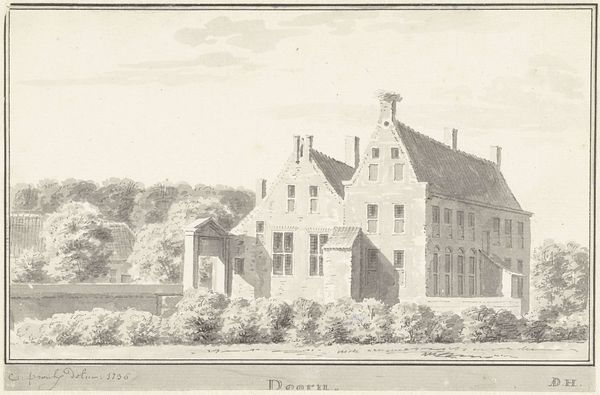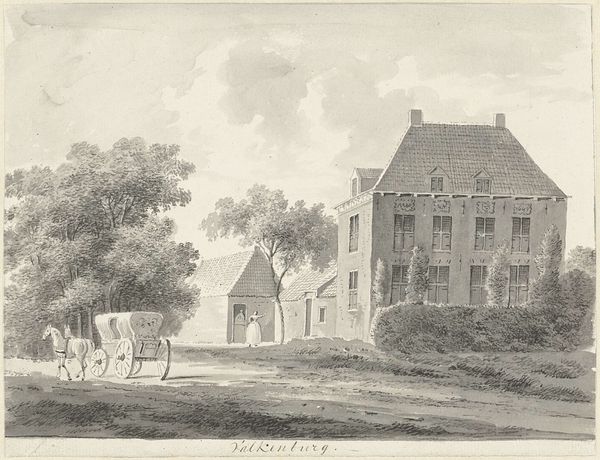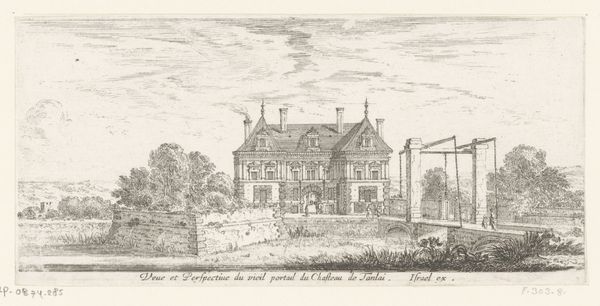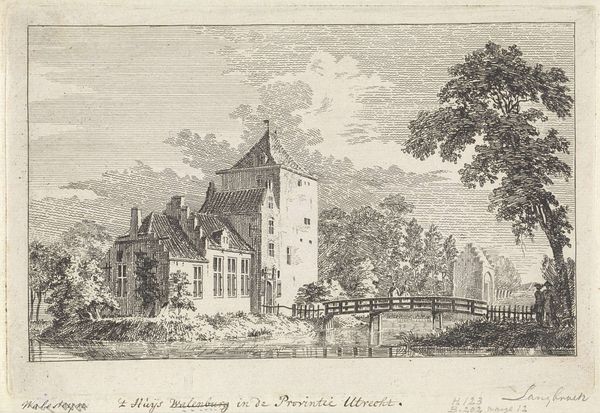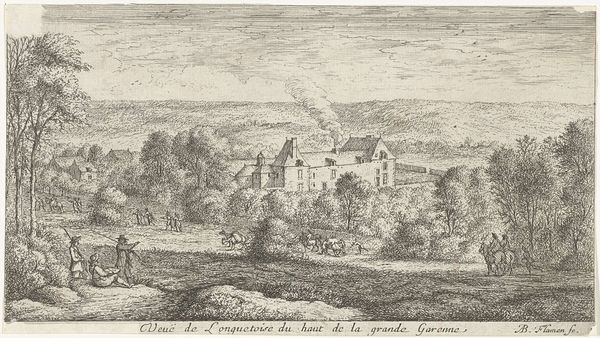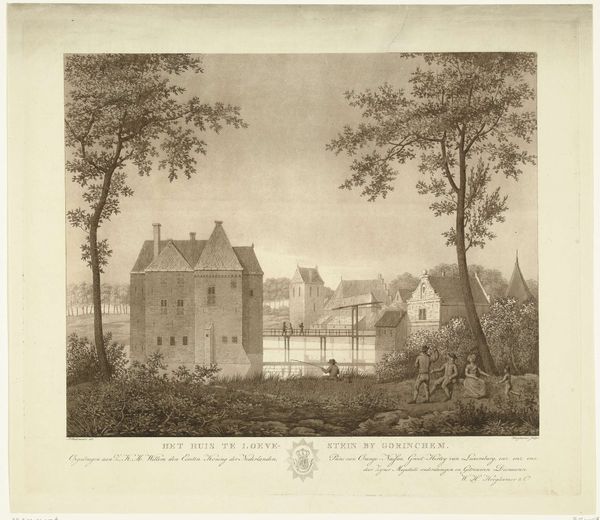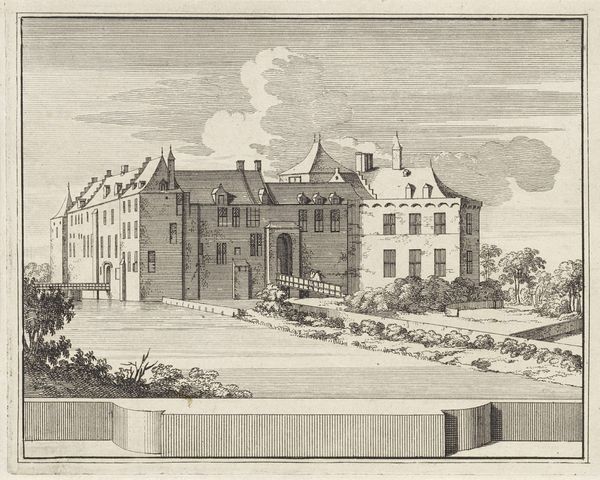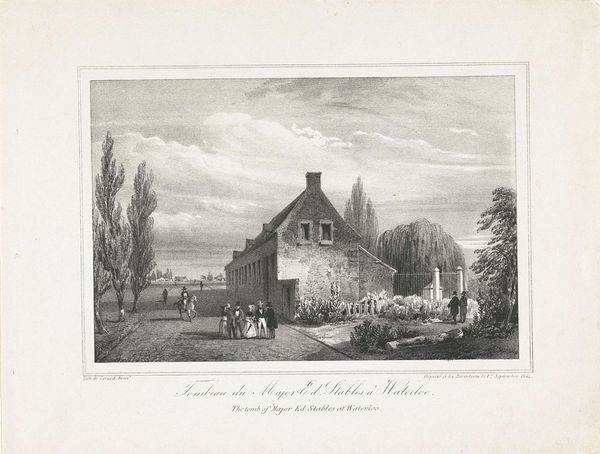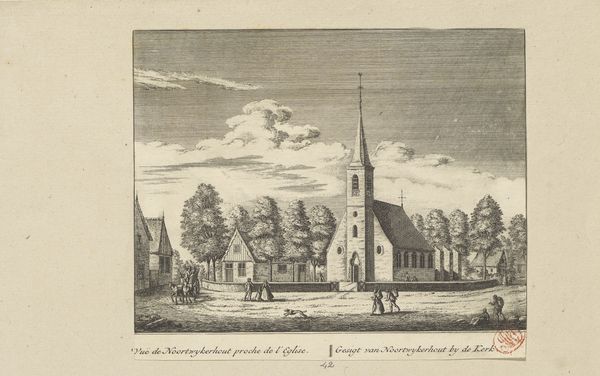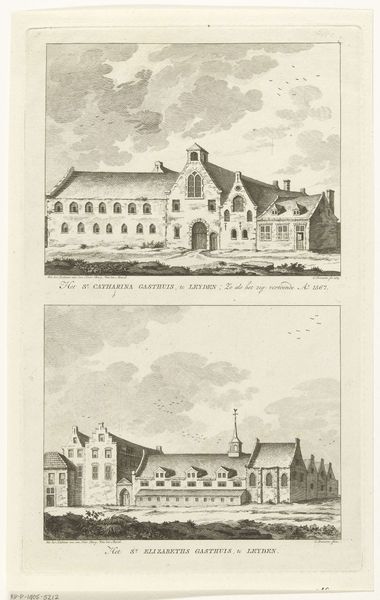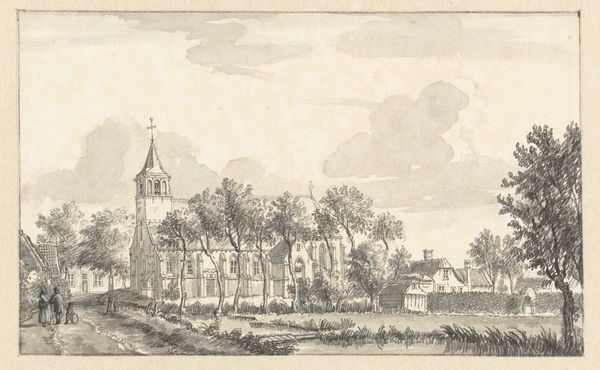
Dimensions: height 150 mm, width 225 mm
Copyright: Rijks Museum: Open Domain
Hendrik Spilman made this print of Appeltern Castle sometime in the 18th century. It’s an etching, meaning that the image was incised into a metal plate, likely copper, and then printed onto paper. Look closely and you’ll see many fine lines. These were created by repeatedly drawing a needle across the plate and then bathing it in acid. The acid bites into the metal where it’s been exposed, creating grooves that hold the ink. As you can imagine, this was an exacting, time-consuming process. The amount of work that went into such a print makes it clear that printmaking in the 1700s was a trade. Prints like this one were essentially proto-photographs, allowing people to circulate images of places and things, and as such they were tied to an increasingly commercial economy. Spilman’s etching is a reminder that even seemingly straightforward depictions involve complex processes and considerable labor.
Comments
No comments
Be the first to comment and join the conversation on the ultimate creative platform.
